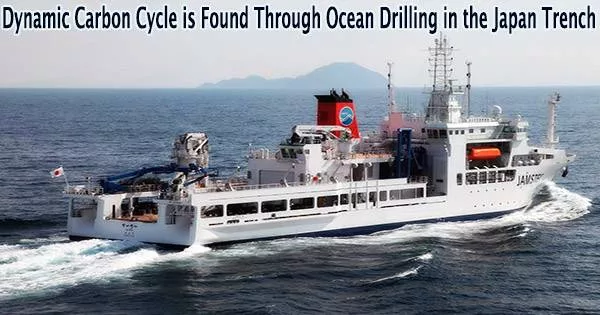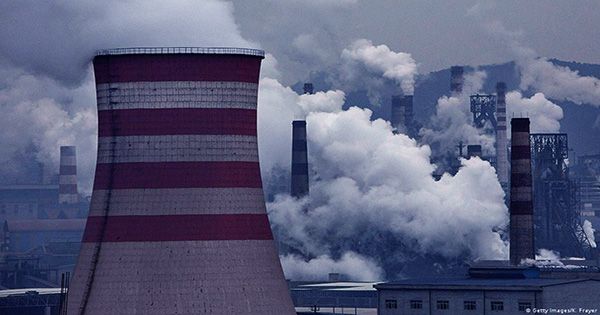The Japan Trench is a prominent undersea trench located in the northwestern Pacific Ocean, off the eastern coast of Japan. It is one of the most significant subduction zones in the world and plays a crucial role in the geology and tectonics of the region.
The Japan Trench is located on the “Pacific Ring of Fire,” a region of special interest in earthquake and deep-water research.
“It is here that oceanic plates bend, form ultra-deep-water trenches and move below overriding plates in so-called subduction zones, while accumulating long-term global plate tectonic strain,” says Dr. Ken Ikehara from National Institute of Advanced Industrial Science and Technology, Japan, and co-chief scientist of IODP Expedition 386. “This energy is released cataclysmically during so-called megathrust earthquakes, like it happened in 2011 during the devastating Tohoku-oki Earthquake.”
Large volumes of sediment and fresh organic carbon can be remobilized by earthquake-related seafloor trembling, which is then transported by gravity flows into the terminal sink of hadal trench basins.
The IODP Expedition 386 team has gathered and analyzed 58 sediment cores from holes cored up to 37.82 meters deep in the sea bed at 15 sites along the 500-km-long trench axis in order to study the long-term history of megathrust earthquakes and look into the roles of earthquakes in the ultra-deep-water environment.
“These operational expedition achievements of successful deep-subsurface sampling at water depths between 7,445 and 8,023 m below sea level set two new records in over 50 years of scientific ocean drilling and coring,” says Prof. Michael Strasser from the University of Innsbruck and co-chief scientist of the IODP Expedition 386. “We have cored the deepest water site at a water depth of 8,023 meters and recovered the deepest sub-sea level sample from 8,060.74 meters below sea level.”
Analysis of such unprecedented samples and research led by Prof. Rui Bao at Ocean University of China has found a large amount of labile dissolved carbon stored in the sediment interstitial water.
For instance, in our study we also report the occurrence of authigenic carbonates in the deep subsurface of Japan Trench sediments, which suggests active transformation of carbon between its different forms (sedimentary, dissolved, gaseous and mineral) and implies that hadal trench environments host dynamic carbon cycling, which link the Earth’s surface and its deeper interior along subduction zones, providing great opportunities for future studies.
Professor Rui Bao
The active organic carbon remineralization in the hadal trenches is substantially greater than in other deep-water settings of the open ocean, according to the dissolved carbon storage. The scientists found that the dissolved organic and inorganic carbon had aged and accumulated in the deep underground sediments using cutting-edge radiocarbon techniques.
“These are exciting results, because these dissolved carbon fractions may have great impacts on the deep carbon cycle as they are buried still deeper into the trench sediments and the subduction zone,” said Mengfan Chu, Ph.D. candidate at Ocean University of China, and lead-author of the study now published in Nature Communications.
Active microbial-mediated dissolved carbon cycling in the deep subsurface sediments
The notion is supported by a thorough geochemical analysis of the sediment interstitial water based on the findings of IODP Expedition 386. Sediments found in the Japan Trench contain enormous methane storage spaces in addition to other remarkable geochemical features of the interstitial water.
This suggests that there is active microbial methanogenesis in the hadal trenches, which is thought to be a result of frequent, powerful earthquakes along the subduction zone. Earthquakes operate as a potent modulator in the trench carbon cycle and the deep biosphere metabolisms in these harsh environments by raising organic carbon fluxes and changing the physical and chemical properties of the sediment deposits.
“These discoveries provide strong evidence that the hadal trenches are not ‘tranquil’ deep-sea environments as previously considered. We’re excited to say that more discoveries about the hadal trench carbon cycle are bound to be made in the future.” says Prof. Rui Bao.
“For instance, in our study we also report the occurrence of authigenic carbonates in the deep subsurface of Japan Trench sediments, which suggests active transformation of carbon between its different forms (sedimentary, dissolved, gaseous and mineral) and implies that hadal trench environments host dynamic carbon cycling, which link the Earth’s surface and its deeper interior along subduction zones, providing great opportunities for future studies,” Prof. Bao continues.
Further perspectives of research in the Japan Trench
The latest findings of a dynamic carbon cycle in the Japan Trench mark the first significant scientific breakthrough as a result of Expedition 386’s innovative high temporal and high geographical resolution subsurface sampling and analysis of the hadal oceanic trench. Alongside this first scientific IODP-Expedition 386 related publication, the preliminary results of the entire expedition are now released by IODP.
The samples and data from this voyage provide new insights and the opportunity to deepen our understanding of deep-sea elemental cycles and their impact on hadal habitats. They also provide fascinating event records that go back more than 24,000 years. This makes it possible to conduct continual research and adopt fresh viewpoints when discussing the risks and long-term recurrence of large megathrust earthquakes.
Thirty-six scientists with expertise in different geoscience disciplines from Austria, Australia, China, Finland, France, Germany, India, Japan, UK, and the United States are now conducting further research using the samples acquired by the advanced ocean drilling platform of IODP. The frontier of ultra-deep-water, subduction zone, and earthquake research is anticipated to be pushed by more significant scientific developments.
















